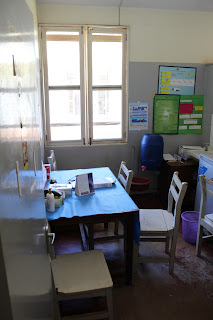The death rate of children in Uganda is extremely high. I hope this is not a surprise to anybody,
however have you ever considered how high it is? Below is the comparison between the UK and
Uganda.
|
|
Uganda
|
UK
|
|
Neonatal
mortality rate (per 1000)
|
26
|
3.2
|
|
<1
mortality rate (per 1000)
|
63
|
4.2
|
|
<5
mortality (per 1000)
|
99|
|
5
|
26/1000, thats 2.6% of newborn babies die. Is that so bad? Well in the UK the equivalent is 0.32%. And this is the official statistics. In Uganda the majority of births take place
outside of a healthcare setting. It is
therefore likely that there are children who are not included in these
statistics. That means that in Uganda
approximately 43,000 newborn babies die
every year!!
One of the major causes of death in the neonatal period is
birth asphyxia. Birth asphyxia is when a
child is born but fails to breathe. It
is suspected that birth asphyxia accounts for 900,000 deaths worldwide every
year.
Due to this there has been a large effort to improve care at
the time a baby is born. One of the
major ways of doing this is to ensure that when a woman delivers in healthcare
centre where the birth attendant is skilled in resuscitation of the
newborn. As part of our time in Uganda
we have been involved with a local NGO (non-governmental organisation) trying
to provide training in the care of the newborn baby. The course we have designed concentrates on
ensuring all participants are able to provide effective resuscitation care to
all newborns.
 Participants are also taught about a wide range of common
problems affecting newborns in Uganda.
The course aims to build on knowledge they already have and to update it
with current practice in Uganda and to give the health workers information that
can be passed onto parents to improve preventative care in Uganda.
Participants are also taught about a wide range of common
problems affecting newborns in Uganda.
The course aims to build on knowledge they already have and to update it
with current practice in Uganda and to give the health workers information that
can be passed onto parents to improve preventative care in Uganda.
We have delivered the course on 3 occasions and trained 37
midwives, nurses and doctors so far, who all showed excellent resuscitation
skills following the course. We have
also trained 7 healthcare workers to deliver the course. This should provide a lasting presence. Over the next few months we hope to deliver
the course of more occasions.
We have also trained a number of student nurses at Jinja
Hospital itself, modifying the ENSURE course to a half-day version for training
in resuscitation of the newborn and routine care of the newborn.
The feedback so far has been very positive, however
participants have often commented that they do not have the ambu- bag and mask
to perform resuscitation at the healthcare centres where they work.
 Jess and I are in the process of acquiring 10 of these sets
to give to health centres, unfortunately this is only the tip of the
iceberg. If anyone out there has access to ambu- bags that are not being used,
Jinja hospital would be very grateful to receive donations. Please contact us
if you are in a position to help.
Jess and I are in the process of acquiring 10 of these sets
to give to health centres, unfortunately this is only the tip of the
iceberg. If anyone out there has access to ambu- bags that are not being used,
Jinja hospital would be very grateful to receive donations. Please contact us
if you are in a position to help.
Thank you.















